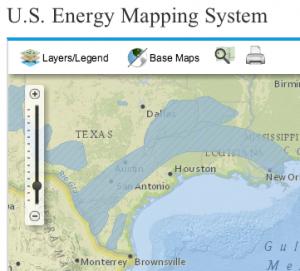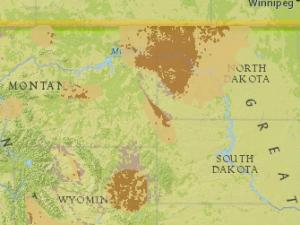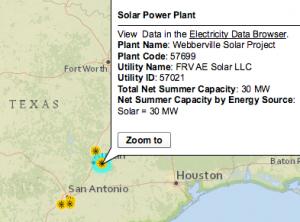Now that the US Energy Information Administration has unveiled an expanded interactive mapping tool that displays the locations of oil and gas wells across the United States, users can track trends across specific plays, starting on a regional level, where busy oil and natural gas exploration has transformed wide swaths of Texas, North Dakota and the Northeast, and then they can drill down to find each well.

With this addition, users can see every facet of the complex US energy landscape, from the upstream oil and gas plays, to midstream pipelines, and downstream refineries and power plants, including fossil fuel, nuclear, wind, solar and biomass. Integrated into one tool, it's an evolving energy ecosystem at your finger tips.
If, for example, you're reading about how two-thirds of the production in North Dakota's Bakken shale oil field rides the rails because of a shortage of pipelines, you can easily toggle between a graphic of the densely clustered area (highlighted in brown on map below) hugging the Canadian border and another showing the limited number of pipelines leaving the area.

Unfortunately there's still some work to be done. While the website has basic information on the well and its location - onshore and offshore - it does not show the owner or production details. But that's a refinement to look forward to as more data surges into the DOE.
Other energy sources are just as accessible. For example, the map makes it easy to visualize Washington state's reliance on hydropower after viewing the dense cluster of river straddling dams, with a quick drill-down revealing the specific production capacity of each site.
For fans of renewable energy, the data also lays out the best regions for wind and solar energy, according to Fuelfix, helping to pinpointing areas for future deployment.
If you're scouting for Texas energy sources, it's easy to find the Permian Basin, Eagle Ford and Barnett shales, and just a toggle away, you'll see that wind farms are all bunched in the western part of the state. It also turns out that the state's skimpy solar power supply is primarily clustered near Austin.

The EIA's mapping tool isn't the only new data source tracking the United States oil and gas boom. Last October, the EIA started issuing a monthly report on new well productivity. This helps shed light on the vigor of the boom. This close look also includes the decline rates of old wells and overall production in six drilling hot spots.
The six regions - including the Eagle Ford Shale, Permian Basin, and Haynesville Shale in parts of Texas - accounted for 90 percent of domestic oil production growth and virtually all U.S. natural gas production gains from 2011 to 2012, as energy companies combine hydraulic fracturing and horizontal drilling to unlock the hydrocarbons buried deep underground.


